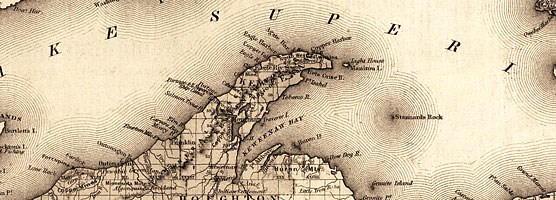
7,000 years agoThe earliest known metalworking in North America begins when Native peoples start mining copper on the Keweenaw Peninsula. Digging pits and using heavy stones to break waste rock away from copper masses, they fashion bracelets, beads, tools, fishhooks and other items for trade. Objects made of Keweenaw copper have been found in archeological sites across the continent. 1771Alexander Henry makes the first English attempt to mine copper on the Keweenaw Peninsula near the Ontonagon River. At the time, the nearest English settlement is nearly 300 miles away at Sault Saint Marie and the region is completely undeveloped and mostly unmapped. Poor planning cripples Henry's adventurous spirit, and in the spring of 1772 his mine collapses after producing little copper. 1772"The copper ores of Lake Superior can never be profitably sought for but local consumption. The country must be cultivated and peopled before they can deserve notice." - Alexander Henry 1776Delegates to the Continental Congress convene in Philadelphia and on July 4, 1776, adopt the Declaration of Independence. 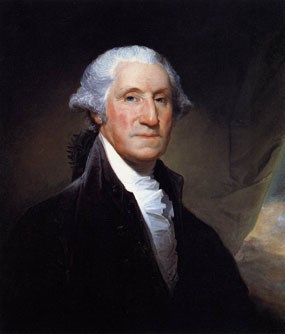
Metropolitan Museum of Art, New York 1789George Washington is elected president of the United States in a vote by state electors. The U.S. Constitution goes into effect, after being ratified by nine states. 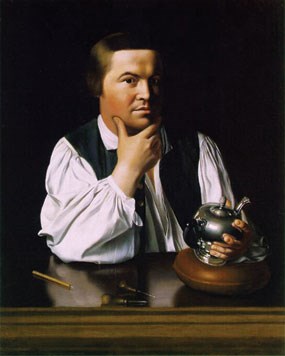
Museum of Fine Arts, Boston 1801Paul Revere, who would later be made famous in H. W. Longfellow’s poem "Paul Revere's Ride," creates the Revere Copper Company, the first copper rolling mill in America. This Massachusetts-based company specializes in copper roofing and sheathing for ships. The limited U.S. supply of copper forces Revere’s company to import most of its metal. 1803The United States agrees to pay France $15 million for the Louisiana Territory, which comprises about 830,000 square miles and extends west from the Mississippi River to the Rocky Mountains. The addition nearly doubles the size of the country and includes rich copper deposits in the area now within the state of Montana. 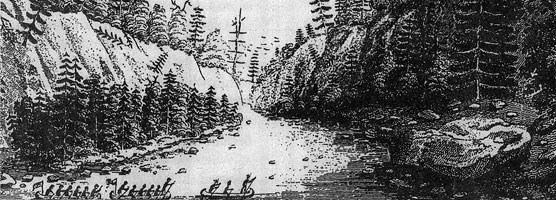
1820While leading an expedition through the Upper Peninsula, Michigan Territorial Governor General Lewis Cass visits the Ontonagon Boulder, a large piece of float copper along the Ontonagon River. 1837Michigan becomes the 26th state admitted into the Union. The Upper Peninsula is added to Michigan after the state relinquished its claim to land around Toledo, Ohio. 1840Douglass Houghton, state geologist of Michigan, publishes a report on the geology of the Upper Peninsula and describes the Keweenaw's copper deposits. Despite his appeal for caution, a land rush would soon start as investors, miners and entrepreneurs attempt to acquire copper-rich real estate. 1842The Ojibwe sign the Treaty of La Pointe ceding their mineral-rich lands in the Upper Peninsula to the United States. 1843The United States Government opens a mineral land agency office in Copper Harbor. 1844The Pittsburgh and Boston Mining Company begins mining near Copper Harbor. The operation is abandoned in 1845 after a $28,000 investment, but only $2,968 returned. Though the company produced little copper, it was the first serious American mining attempt. 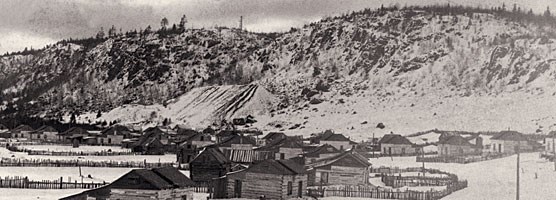
Keweenaw NHP Archives, Jack Foster Collection 1845The Cliff Mine near Eagle River opens. It is the first large-scale, profitable mine on the Keweenaw Peninsula. Before it closes in 1870, Cliff Mine rewards its investors with $2,519,000. 1846The Portage Mining Company and the Northwestern Mining Company resolve a land lease dispute by forming the Quincy Mining Company. After exploring the hillside above Portage Lake, the company digs its first shaft in 1848. 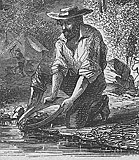
Harper’s Weekly, 1860 1848On January 24, gold is discovered at Sutter’s Mill in California. The Gold Rush will reach its height in 1849 |
Last updated: January 18, 2024
